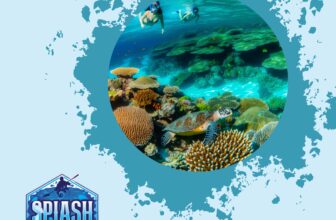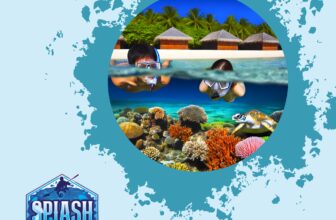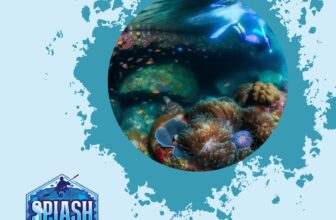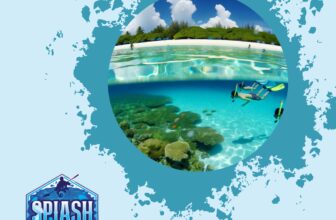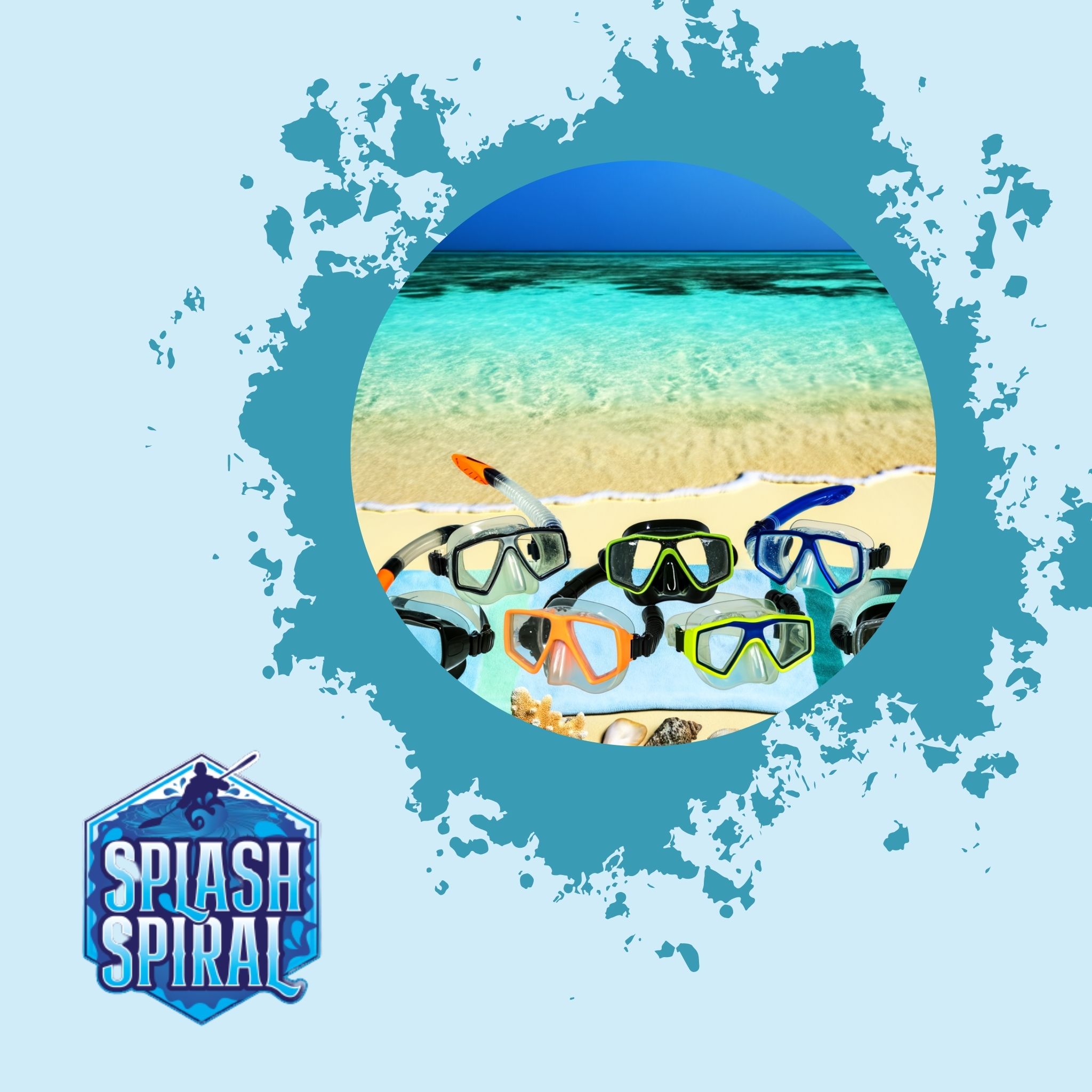
For beginners and aspiring snorkelers, choosing the right destination and timing for your adventure can make all the difference. Southeast Asia offers some of the world's best snorkeling spots, renowned for their stunning coral reefs and crystal-clear waters. But when and where exactly should you go to ensure the best visibility? Let’s dive in.
The Importance of Water Visibility in Snorkeling
When it comes to snorkeling, water visibility isn't just a bonus—it's a game-changer. For beginners and seasoned snorkelers alike, clear water can make all the difference between a magical underwater adventure and a murky, frustrating experience.
Explaining Water Visibility
Water visibility refers to how far and how clearly you can see underwater. In high-visibility waters, you'll be able to spot vibrant coral reefs, schools of colorful fish, and other marine creatures from a distance. Low visibility, on the other hand, can obscure your view, making it challenging to fully appreciate the underwater world and, in some cases, even find your way back to shore.
Factors Affecting Visibility
Several elements play a role in water visibility, and understanding these can help you pick the best times and places for your snorkeling adventures:
- Weather: Clear skies often mean better visibility underwater. Rain, wind, and storms can stir up sediment and reduce clarity.
- Water Temperature: Warmer waters tend to hold more suspended particles and algae, affecting visibility. Conversely, cooler waters are often clearer.
- Tides: High tide generally brings in clearer offshore water, while low tide can stir up sediment from the ocean floor, decreasing visibility.
- Time of Day: Early morning is usually the best time for snorkeling. The water tends to be calmer, and the angle of the sun provides optimal lighting for viewing underwater life.
- Seasonal Changes: Dry seasons usually offer clearer water than wet seasons, particularly in tropical regions. Monsoons and heavy rains can bring in runoff that significantly reduces visibility.
- Water Pollution: Pollution from coastal development, agriculture, and industry can reduce water quality and visibility. Opt for less affected areas to avoid disappointment.
By taking these factors into account, you can plan your snorkeling trips to maximize your chances of clear, captivating underwater experiences.
Top Locations for Clear Waters and Coral Reefs
1. Thailand
- Best Spots: Ko Phi Phi, Similan Islands
- Ideal Time: November to April for clearest views.
- Why It’s Great: Rich marine life and vibrant coral reefs.
Thailand boasts some of the clearest waters in Southeast Asia, particularly between November and April. Ko Phi Phi and Similan Islands are top choices, offering a colorful array of marine life and eye-popping coral reefs. The relatively calm seas during this period ensure optimal visibility, allowing you to fully appreciate the underwater splendor.
2. Indonesia
- Best Spots: Raja Ampat, Bali
- Ideal Time: April to October to avoid rainy seasons.
- Why It’s Great: Home to some of the world's most biodiverse marine ecosystems.
Indonesia is a snorkeling paradise with destinations like Raja Ampat and Bali that attract snorkelers from around the globe. Visit between April and October to dodge the heavy rains and enjoy maximum water clarity. The biodiversity here is off the charts, making every snorkeling trip a potential new adventure.
3. Malaysia
- Best Spots: Sipadan, Redang Island
- Ideal Time: March to October, avoiding monsoon season.
- Why It’s Great: Pristine coral reefs and a wide variety of fish species.
Malaysia’s Sipadan and Redang Island offer some of the most pristine snorkeling conditions you'll find. Timing your trip between March and October means steering clear of the monsoon season and enjoying excellent visibility. The vibrancy and health of the coral reefs here, coupled with diverse marine life, provide unforgettable snorkeling experiences.
4. Philippines
- Best Spots: Palawan, Cebu
- Ideal Time: December to May for optimal water clarity.
- Why It’s Great: Stunning underwater landscapes and unique marine species.
In the Philippines, destinations like Palawan and Cebu shine from December to May. Clear skies and calm waters during these months enhance your chances of crystal-clear visibility. The underwater landscapes are simply stunning, filled with unique marine species that make for a rich snorkeling adventure.
5. Vietnam
- Best Spots: Nha Trang, Phu Quoc
- Ideal Time: February to October for the best conditions.
- Why It’s Great: Calm waters and colorful coral reefs.
Vietnam’s Nha Trang and Phu Quoc are emerging as top snorkeling spots. The ideal time to visit is from February to October, when the sea conditions are at their best. You’ll find calm waters and colorful coral reefs that are perfect for both novice and experienced snorkelers looking for a serene experience.
Visibility Tips for Beginner Snorkelers
Check Weather Forecasts
Before you pack your gear and head to the beach, take a moment to check the weather forecasts. Clear skies often lead to better water visibility. Rain and overcast conditions can stir up the water and lower visibility, making your snorkeling adventure less enjoyable. Use reliable weather apps or websites to get accurate and up-to-date information.
Morning Snorkeling
The early bird catches the worm, or in this case, the best underwater views. Visibility is typically better in the morning before the wind picks up and stirs the water. Plan to start your snorkeling sessions early in the day to take full advantage of the calmer, clearer water.
Avoid Crowded Spots
Popular spots might be tempting, but they often come with a downside: crowds. More people around means more sand and silt kicked up from the seabed, reducing visibility. Aim for less crowded areas where the water is less disturbed. Not only will you get better visibility, but you’ll also have a more peaceful experience.
Use Quality Gear
Your gear can make or break your snorkeling experience. Ensure your mask fits snugly to avoid leaks that can cloud your vision. A good snorkel should allow for easy breathing without letting water in. Make sure your fins are comfortable to help you glide smoothly without disturbing the water too much. Investing in quality gear can greatly enhance your underwater adventure.
Conditions That Affect Snorkeling Visibility
When it comes to snorkeling, clarity is crucial for making the most out of your underwater adventure. Here are some key conditions that can significantly impact visibility:
Seasonal Changes
Different seasons bring varying conditions to the waters of Southeast Asia. For instance, the monsoon seasons—like those in Thailand from May to October—often churn up the water, reducing visibility due to increased sediment and debris. Conversely, dry seasons tend to offer better water clarity, making it the ideal time for snorkeling. Always research the best seasons for your chosen destination to get the clearest views.
Tidal Movements
Tides play an underrated role in water visibility. Generally, slack tide—the period between changing tides—is best for snorkeling. During high or low tides, currents can stir up sediment from the seafloor, clouding the water. Checking tide tables and planning your snorkeling during slack tide can offer you a clear and uninterrupted view of marine life.
Water Pollution
Pollution is a global issue that doesn't spare even the most beautiful snorkeling spots. Runoff from land, plastic waste, and other pollutants can drastically reduce water visibility and harm marine ecosystems. To avoid affected areas, keep an eye on local advisories and opt for eco-friendly snorkeling tours that focus on sustainability.
Navigating these elements can be tricky, but understanding how conditions affect water visibility will help you plan a snorkeling trip that's both enjoyable and breathtaking.
Resources for Planning Your Snorkeling Adventure
If you're ready to start planning your snorkeling trip, having the right resources at your fingertips will make the process much smoother and ensure a memorable underwater experience. Here are some valuable online guides and tips to help you get started:
-
SplashSpiral: This site offers comprehensive guides that cover the top snorkeling spots in Southeast Asia. Whether you’re looking for in-depth information on specific locations, trip planning advice, or equipment recommendations, SplashSpiral is a great go-to resource. Check out their detailed guides at SplashSpiral Snorkeling Guides.
-
Snorkeling with Coral Reefs in Southeast Asia: For those particularly interested in exploring the vibrant coral reefs, this guide dives into the best places to witness diverse marine life up close. It also offers insights into the most suitable times of the year to visit each spot. Visit Snorkeling with Coral Reefs for detailed information.
-
Diving Resources: If you’re interested in complementing your snorkeling adventure with some diving, or you simply want to be well-prepared with comprehensive knowledge on underwater activities, this resource hub provides all the necessary information. From beginner tips to advanced techniques, and from equipment reviews to safety advice, you’ll find it all at Diving Resources.
Leveraging these resources will equip you with the knowledge and confidence you need to make the most of your snorkeling adventure in Southeast Asia. Happy planning and even happier snorkeling!
Conclusion
Clear water is key to an unforgettable snorkeling experience in Southeast Asia. By choosing the right locations and planning your trip around the best conditions, you can ensure you’ll see some of the most breathtaking underwater landscapes the region has to offer.
- Choose the Right Locations: Research popular snorkeling spots known for their clear water.
- Plan Around the Best Conditions: Consider the season, weather, and tide schedules to optimize visibility.
Happy snorkeling!



